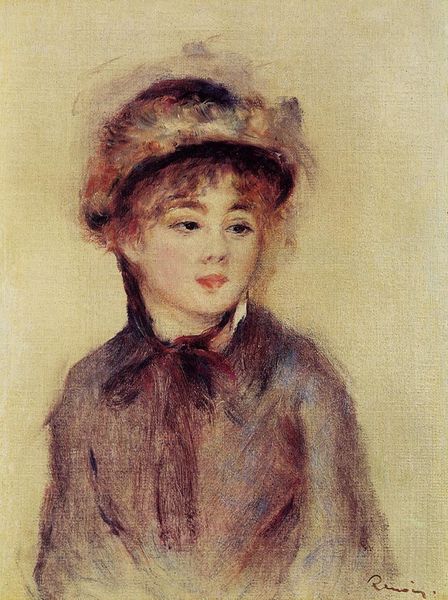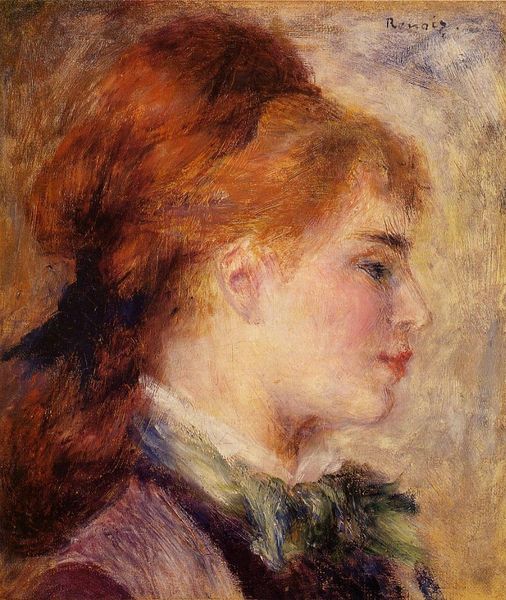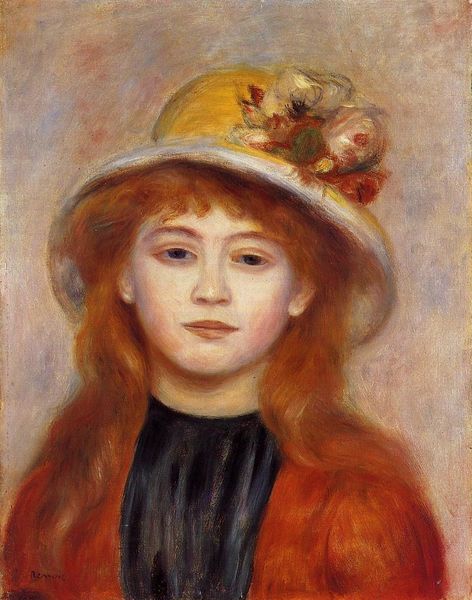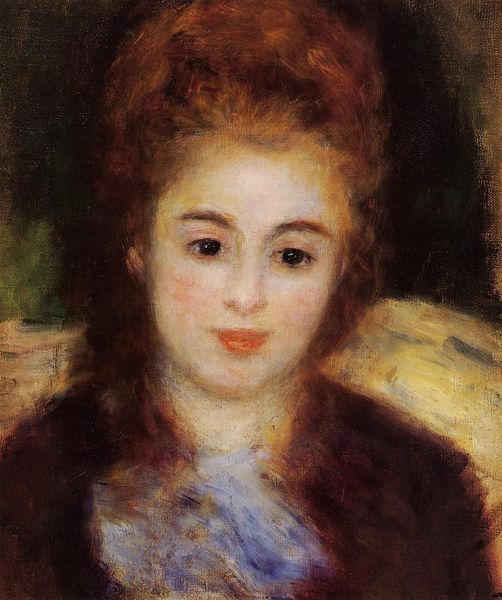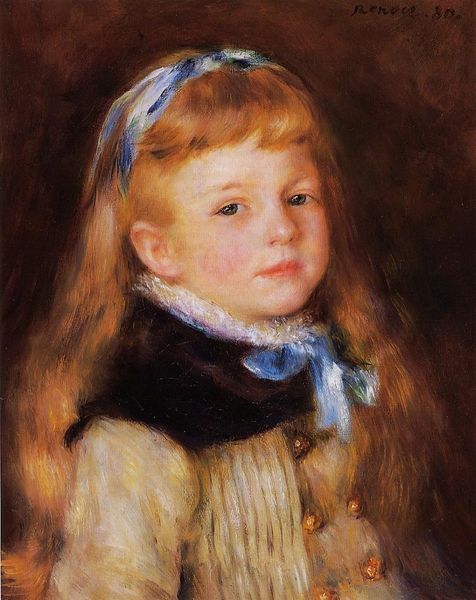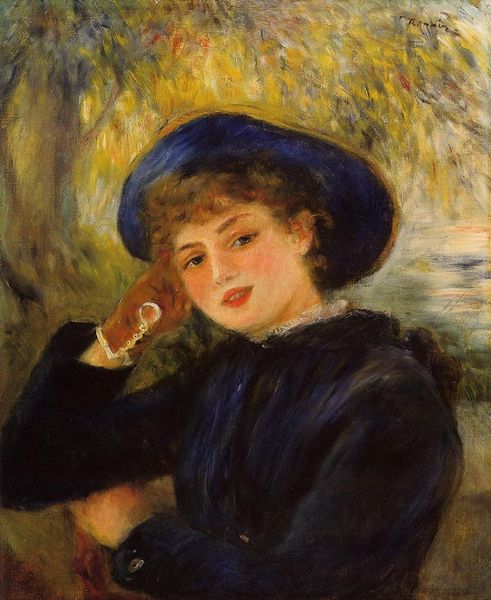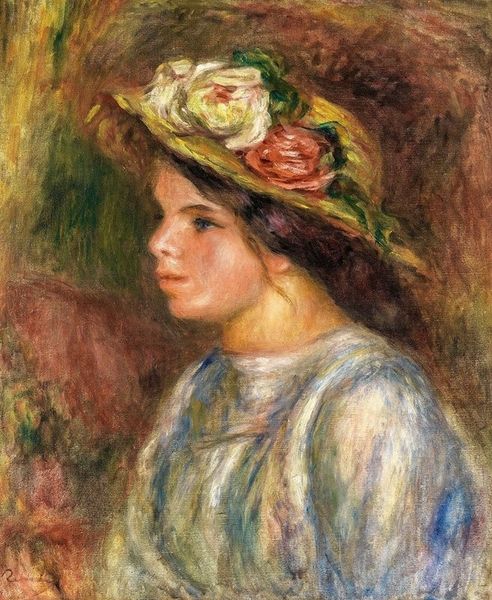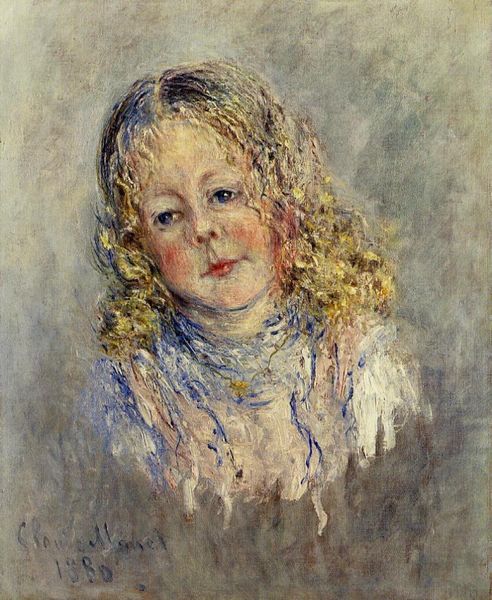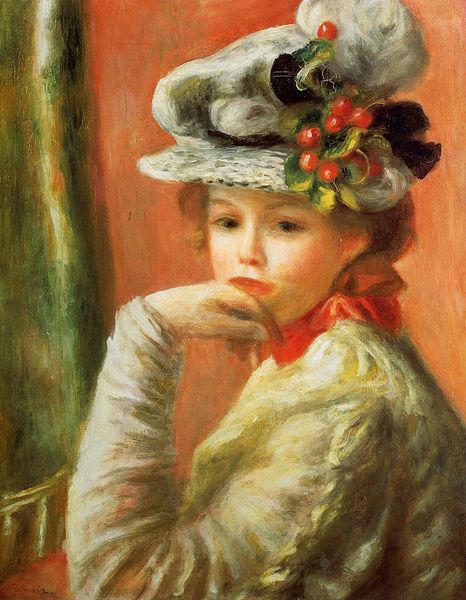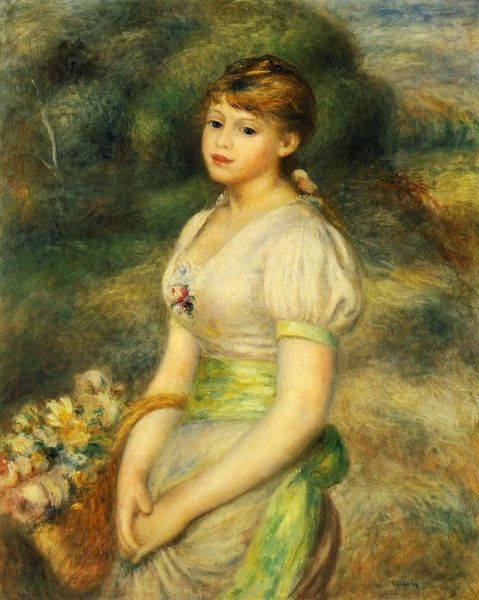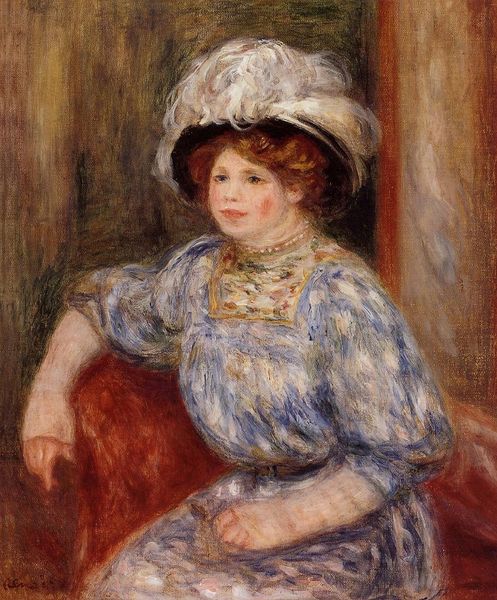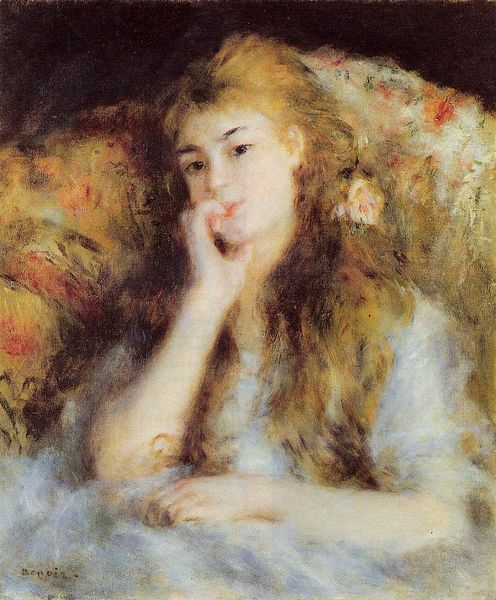
Copyright: Public domain
Editor: So, here we have Renoir's "The Ingenue," painted in 1877, an oil painting currently residing at the Clark Art Institute. It's immediately striking how dreamlike it feels, almost like a fleeting memory. What do you see when you look at this piece? Curator: Beyond the typical impressionistic softness, I see Renoir grappling with the representation of idealized femininity during a time of significant social change. This image echoes a strategic response to public expectations surrounding women and art, setting a stage in which gender roles played out. Editor: So, in a way, Renoir is both participating in and responding to the pressures of his time? Curator: Precisely. Renoir relies on impressionism to create ambiguity, but at the time art was a business which meant following some standard, like pretty ladies in paintings. How can we view paintings without considering the politics of imagery and socio-cultural expectations imposed by society? Consider how exhibition spaces showcased such ideals and how those ideals dictated artistic choices. Does the expression "ingenue" itself play a role? Editor: It definitely adds a layer. It suggests innocence, naiveté, something almost performative. Curator: Exactly. And this 'performance' was heavily dictated by societal norms and, importantly, what was commercially viable in the art market. He may not have believed it entirely, and his paintings became lucrative and famous. What does that do to art production and dissemination? What do museums choosing this for display suggest to us today? Editor: It is fascinating to consider how much socio-political commentary can be embedded even in an image that appears on the surface to be quite simple and pretty. It pushes me to look beyond the aesthetic and think more critically. Curator: Indeed. And it reminds us that museums, like galleries, are far from neutral spaces, but key places to further inspect the intersection of art and socio-historical contexts.
Comments
No comments
Be the first to comment and join the conversation on the ultimate creative platform.
